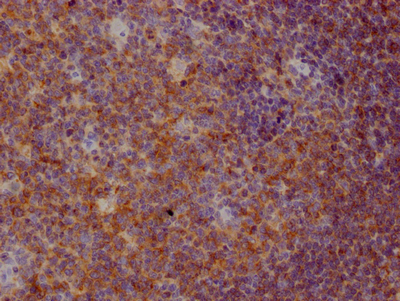CD22, also called Siglec-2, is a receptor predominantly restricted to B cells. On B cells, expression of CD22 is first apparent at the pro-B cell stage of B cell development in the bone marrow, reaching its highest expression, by the mature B cell stage in the periphery. CD22 functions to inhibit BCR signaling and regulate TLR signaling and the survival of B cells. CD22 has been implicated in the regulation of B cell responses to T cell-independent (TI) type 2 antigens (Ags), TLR agonists, and T cell-dependent (TD) Ags. CD22 also plays a role in the migration of recirculating B cells to the bone marrow (BM).
The main production processes of this recombinant CD22 antibody included immunization, B cell harvest, antibody secreting cell enrichment, single cell sequencing, antibody expression and purification. The single B cell screening platform was used for the CD22 antibody gene screening. And this CD22 antibody was tested in ELISA, IHC.






